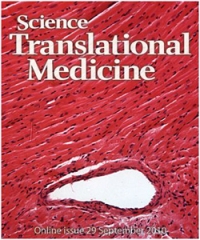UMKC investigator provides key expertise to international sepsis research

This research was supported by the Fundacao para a Ciencia e Tecnologia (Portugal), the GEMI Fund Linde Healthcare (USA), the European Commission 6th Framework Programme and Marie Curie Programme, and also the University of Missouri at Kansas City, (USA) the Conselho Nacional de Desenvolvimento Cientifico e Tecnologico and FAPERJ (Brazil).
When a team of scientists in Portugal were looking for someone to fill in some key blanks in their recently published collaborative research on sepsis, they immediately set their sights on Ann Smith’s laboratory at UMKC. The research centered on the role of a specific protein in combating the types of bacterial infection that lead to sepsis, a condition characterized by a sudden drop in blood pressure and progressive organ failure. Sepsis is one of the most common causes of mortality in intensive care units worldwide and, even under the best possible medical conditions, mortality rates range between 30 and 70 percent.
The protein the researchers were looking at is hemopexin and it has been a focus of Smith’s research for the better part of the past 20 years. Smith is professor of Molecular Biology & Biochemistry at the UMKC School of Biological Sciences and is widely regarded as one of the world’s leading experts on hemopexin. In a recent collaboration, hemopexin was shown to protect the brain from injury in stroke.
Hemopexin is what is known as a “binding protein,” and one of its major functions is to preserve the body’s iron. It does this by sequestering heme molecules that are released or lost by the turnover of heme proteins such as hemoglobin. Heme is a biological form of iron that is vital for cells and has numerous beneficial functions. In the presence of an infection, however, invading pathogenic bacteria can also pirate the heme before it is bound by hemopexin and use the iron from heme to help fuel bacterial growth. As the bacterial infection progresses, the protective hemopexin response becomes overwhelmed leading to the life-threatening infection that is sepsis.
The Portuguese study, which was co-authored by Smith and also included collaboration with another research team in Brazil, showed that providing hemopexin saved the lives of mice that would have otherwise died from an experimental model of sepsis. Furthermore, the authors suggest that providing hemopexin has the potential to significantly reduce the risk of an infection progressing to the point of fatal sepsis in humans. The results of that study, “Targeting free heme to suppress the pathogenesis of severe sepsis,” were featured in a recent issue of Science Translational Medicine. Thus, these findings may lead to a new approach to treat severe sepsis.
Quick Five: Ann Smith, School of Biological Sciences
1. Where were you born and raised?
I was born in Earlsfield, which is a suburb of London in England, but I grew up and went to school in Wimbledon, Surrey.
2. How and when did you become interested in science?
I was always interested in the natural world including plants and insects in the garden and in the English countryside. When I was quite young my father took me by train to a quarry somewhere in Sussex on the south coast of England where we dug up several fossilized sea urchins, bivalves and even a meteorite – all of which I still have today.
3. Where did you study?
I went to the University of Hull for my B.S. in Biochemistry and then worked on my Ph.D. at King’s College Hospital Medical School, part of the University of London. King’s was across the road from the Institute of Psychiatry and I would go to their library. I was fascinated with the brain and what can go wrong with it.
4. How and when did you get interested in your current area of research?
 There was a course on human biochemistry at Hull that introduced me to the biological form of iron called heme. I immediately thought it would likely be an important regulatory molecule in our body. A few years later, I met Dr. Ursula Muller-Eberhard, who worked on the heme binding protein hemopexin and was recruiting postdocs for her lab at the Scripps Institute. She offered me a position and I went there for three years to carry out research on hemopexin and have been working on it ever since.
There was a course on human biochemistry at Hull that introduced me to the biological form of iron called heme. I immediately thought it would likely be an important regulatory molecule in our body. A few years later, I met Dr. Ursula Muller-Eberhard, who worked on the heme binding protein hemopexin and was recruiting postdocs for her lab at the Scripps Institute. She offered me a position and I went there for three years to carry out research on hemopexin and have been working on it ever since.
5. When did you come to UMKC and what influenced your decision to come here?
I came to the School of Biological Sciences at UMKC as an Associate Professor in 1989. My personal and professional partner at the time was also coming here and the School had just been been designated a “Program of Eminence” with a focus on life sciences research.

